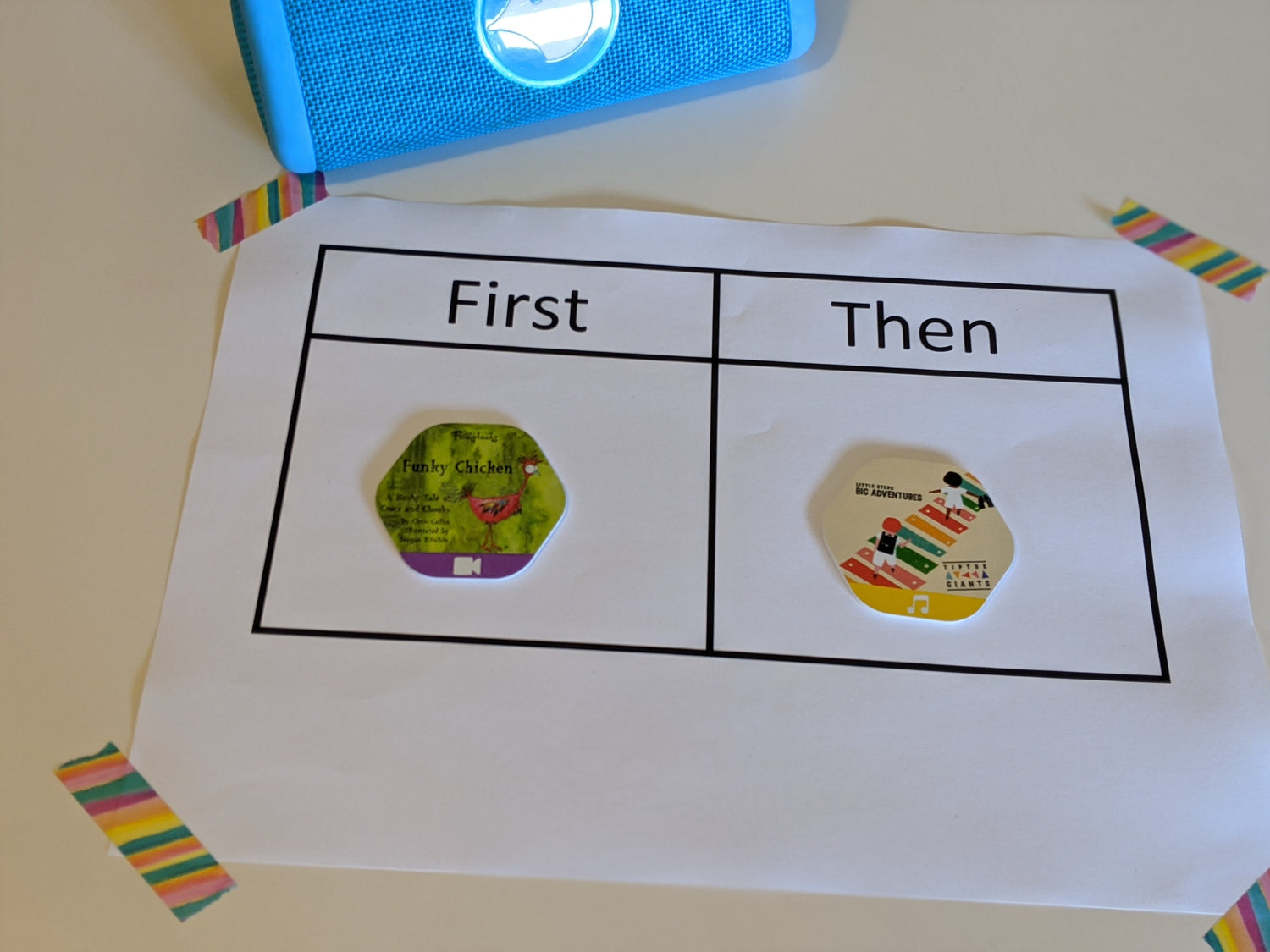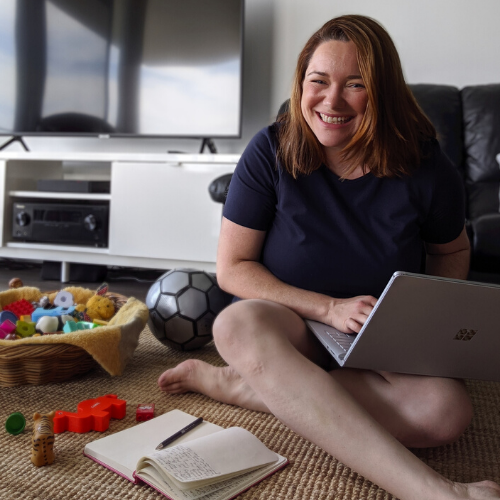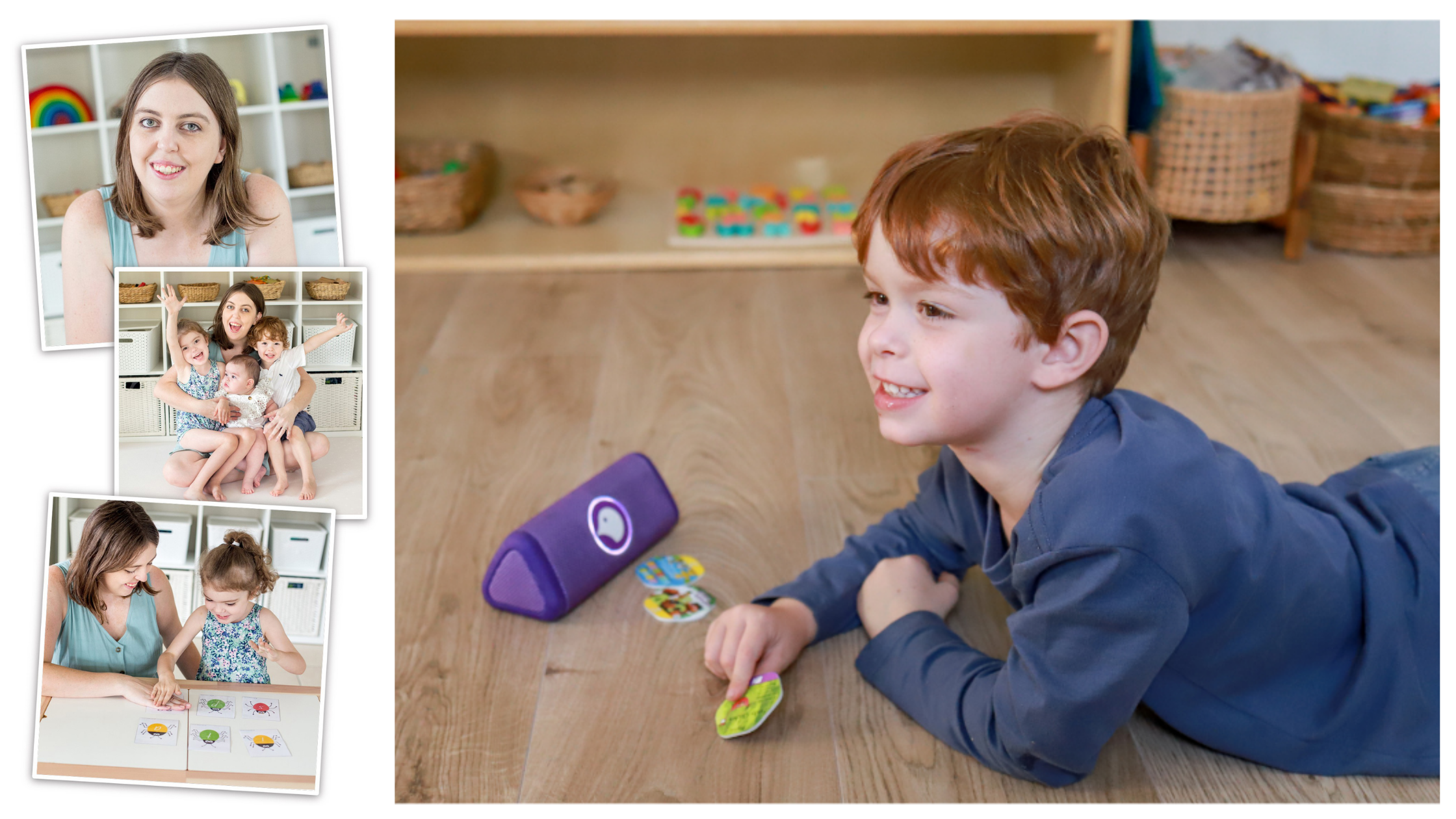My previous blog post explored how you can use Birde in your every day life to help with family routines. Here, I want to delve deeper in how you can use Birde to help improve developing communication, play and literacy skills. As an Occupational Therapist and Mum to a pre-schooler I can see the benefits Birde can have from really early ages all the way through to school years – and hopefully the following ideas will help spark your creativity on how it can be used in your home.
Communication
Requesting
A lot of early frustrations for babies and toddlers comes from not being able to be understood. Often therapists will recommend the use of visuals to help with clearer communication and requesting. The visual is a concrete representation, easier to understand for the child and doesn’t rely on the adult being able to decipher the pronunciation (… anybody else have to act as translator for their little one?). Birde already has the visual built into their seeds so it’s actually a great way to start to introduce the idea of providing choice via visuals and reinforcing with a verbal prompt.
There are a couple of ways you can use these to help develop communication skills for requesting. 1) they make a request of you – that is, you provide two seeds and present them side by side for your baby or toddler to choose:
or 2) you make a request of them that includes the visual as part of a simple sequence: first… then…
For example, you might present it that you will first read the story together then they listen to the story on the seed and look through the book themselves; first listen to the story, then have a dance. This simple sequence and requesting can grow to include delaying a preferred activity, tidying up before a new game starts or giving some warning that dinner or bath time is coming soon.
Joint attention
You know those moments when you’re playing with your child and it’s obvious that you are both looking at and thinking about the same thing - you know it and they know it: that’s joint attention. Joint attention starts to emerge around 9 months with familiar people and develops from there to more complex or unfamiliar environments. It’s an early and important skill that is the foundation for a lot of later social, play and language skills (and we all know what it’s like to be in the middle of a conversation with someone right next you but they are not really there). Joint attention needs to be both demonstrated and nurtured - not only do our kids crave it but they learn so much from watching you being engaged in what it is that they are doing.
It doesn’t need to be complicated either – just popping on the Tiptoe Giants songs and singing along together or adding in some actions is a simple way to get a quick hit of that togetherness and develop those joint attention skills.
Increase vocabulary
It’s long been recognised that reading and literacy skills are linked to vocabulary, in fact vocabulary as early as 18-months can predict reading comprehension at 16 years of age. Listening to stories with Birde allows for multiple exposures to new words (without you having to read it again) – simple concepts like prepositions (in, on, under, in front of, behind etc) can be acted out and by doing so increase the understanding and use of the words.
Play
Repeating and playing the stories that they hear
Play and repetition is a fantastic recipe for learning and understanding. By listening to the different stories on the Birde Seeds and then being able to play out the actions and stories they are listening to, children are able to both increase their play repertoire and improve their understanding of sequences, social interactions and narratives. This repetition of familiar stories also provides a fantastic foundation for imaginative play – being able to make up alternative endings, combining characters from different worlds or completely new stories is such a fun and creative activity.
Taking turns
Taking turns is an important skill to learn when playing with someone else. The first, then prompt is again really useful to introduce and practicing with Mum or Dad or an older sibling before another little person will always be easier. Modelling language the little person can use with their friends is an easy way for them to start to negotiate taking turns: “First you can play your choice, then I will tap my choice.”
Pretending to be characters in stories
Repeating stories, pretending to be characters from stories and acting out familiar sequences are a great foundation for more complicated and fantastical imaginative play. Imaginative play is role play, make-believe and acting out both positive and negative feelings and experiences. In doing so, imaginative play allows a child to understand and make sense of their world.
Use Birde as a jumping off point for your imaginative play. The characters you already know about can have new adventures or meet other characters from different stories. Follow your child’s lead, encourage everyone who is playing to say yes to ideas and don’t focus on an end point – just enjoy the story and interaction as it naturally evolves.
The creativity, communication and emotional regulation needed for imaginative play helps strengthen friendships and emotional resilience as each child learns to balance their own emotions with those they are playing with. When supported and encouraged, imaginative play can strengthen parental bonds with the child, lower anxiety, decrease anti-social behaviours and improve academic skills and concentration. Children who frequently engage in imaginative play also demonstrate strong negotiation skills, tend to have more and deeper friendships, and excel in creative thinking and problem solving. Any chance you have to include more opportunities for imaginative play in your child’s day is going to be a good thing – for them and for you.
Literacy & Numeracy
Follow along with books
There are lots of skills that are developed by reading books. Understanding sequences in stories is one of my favourites as it translates to so many other more complicated sequences that they are learning (think of all the steps they are stringing together when they are learning to get dressed by themselves, wrap a present or unstack the dishwasher).
Take copies of the pictures from the book and put into the sequence by listening to the story.
After reading the story, try and recall what happened: This can be done in the car or around the dinner table and if it gets a bit muddled that’s ok – you can create your own book sequence and a whole new story.
Find-that-word
Another fun book game is looking for repeated words – For early readers finding familiar words throughout a book can be really helpful to reinforce their recognition and understanding. Write out an often used word from the book you are reading and have them match it each time it appears. Listening along to the story with Birde can help turn this into a game between you and them or a couple of children at different reading levels: one, simple word to start with and build up to multiple or less familiar words as their confidence improves. The added challenge of Birde doing the reading means that the pace is set and they have to keep up!
Drawing characters from stories
An important part of literacy and numeracy is handwriting skills. A simple and great way to develop the hand strength and coordination needed for those precise movements is through drawing. Help your kiddo to trace the birde seeds onto a plain piece of paper and try and copy what is on the seed – the small precise drawings will be a challenge for littles so you may want to make it easier by telling them to colour in the matching colour, draw one thing that they see or something that they know is on that seed. You can also provide extra supports by drawing some of the features and having them colour in or fill in the blanks. Don’t try and correct their grip for this activity – the only goal is to get them to enjoy drawing with you.
Numeracy songs and stories
Early numeracy skills like counting and grouping can also be supported with Birde. The Counting With Paula series follows a familiar adventure sequence involving multiple opportunities to practice counting and exposure to numbers. Combine this with drawing the numbers and characters as you listen to the story – using number puzzle pieces or finding toys that are mentioned in the stories is a way to make these early numeracy skills more concrete.
I hope this has given you some fun and interesting ideas for how to use Birde to enhance your play time. At the end of the day, Birde is a wonderful tool to help you play together and get more done in your day without having to whip out a screen. I’d love to hear if you end up trying some of these ideas with your little one, just DM me on Instagram: @mamas.writing




Leave a comment
This site is protected by hCaptcha and the hCaptcha Privacy Policy and Terms of Service apply.